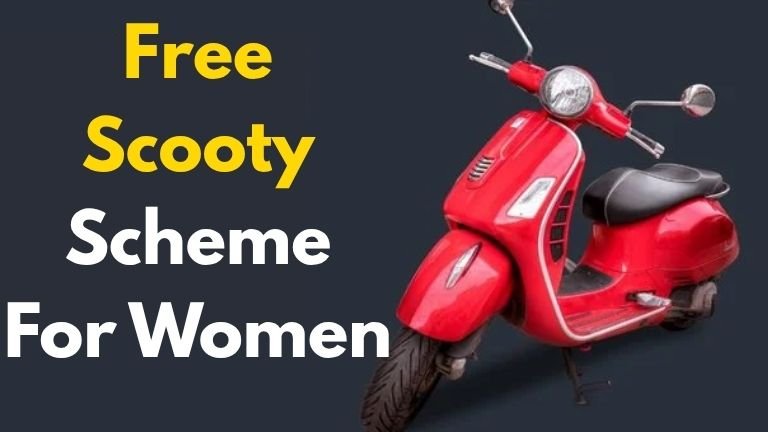Free Scooty Scheme 2025: Empowering Education Through Mobility
The Free Scooty Scheme is a forward-thinking initiative launched by several Indian states to promote female education and empower young women through enhanced mobility. By awarding high-performing girl students with free scooters, the scheme addresses one of the most common barriers to education in rural and semi-urban areas—lack of reliable transport. For many, this isn’t just a gift, but a life-changing opportunity.
1. Purpose and Vision of the Scheme
The primary goals of the Free Scooty Scheme are:
-
To motivate academic excellence by rewarding merit.
-
To reduce school and college dropout rates among girls by easing travel-related challenges.
-
To enhance women’s mobility, confidence, and independence.
-
To encourage gender equality by providing practical tools to support girls’ aspirations.
In many regions, long distances between homes and schools deter female students from continuing their education. This scheme seeks to change that.
2. Key State-Level Free Scooty Programs
Several Indian states have implemented their own versions of this scheme, each with unique features and eligibility criteria:
Uttar Pradesh – Rani Laxmi Bai Scooty Yojana
-
Eligibility: Girls scoring 75% or more in Class 12.
-
Age and Income: Must be a resident of UP; family income must not exceed ₹2.5 lakh.
-
Benefit: Free scooty for college-going girls studying within the state.
-
Application: Online through official education department portals.
-
Budget: ₹400 crore allocated in the 2025–26 state budget.
Assam – Pragyan Bharati Scooty Scheme
-
Eligibility: Female students of government schools with 60%+ marks in Class 12.
-
Support Package:
-
Free scooty (petrol or electric),
-
₹1,000 per month for hostel/mess expenses,
-
Education loan support of up to ₹50,000.
-
-
Annual Target: Distribution of around 20,000 scooters.
-
Note: The eligibility percentage was recently raised to 80%, which led to student protests.
Rajasthan – Kali Bai Bheel Medhavi Chhatra Scooty Yojana
-
Eligibility: Class 12 girl students from low-income families (below ₹2.5 lakh).
-
Other Benefits: Free helmet, fuel allowance, insurance, and transport subsidy.
-
Reservation: Prioritized for SC/ST and backward communities.
-
Target: 10,500 scooters distributed annually.
Andra Prdesh & Telangana – Free Scooty Scheme for Daughters of Labourers
-
Eligibility: Girls aged 18–40 studying in college whose parent is a registered construction/labour worker.
-
Benefits:
-
Free electric scooter, or
-
₹50,000 in financial support.
-
-
Application: Through the Labour Department’s online portal.
-
Limit: One scooter per family.
3. Eligibility Criteria – At a Glance
| State | Academic Requirement | Income Limit | Age Range | Target Group |
|---|---|---|---|---|
| Uttar Pradesh | 75%+ in Class 12 | ≤ ₹2.5 lakh | ~16–23 years | UG students in UP |
| Assam | 60%+ (now 80%) in Class 12 | State-defined | ~16–23 years | Govt school girls |
| Rajasthan | Merit in Class 12 | ≤ ₹2.5 lakh | 18–40 years | College-going girls |
| Karnataka | Enrolled in college | Not specified | 18–40 years | Daughters of labourers |
4. Application to Distribution: Step-by-Step Process
a) Application Phase
Students must register on the designated state government portal. Required documents typically include:
-
Class 12 marksheet,
-
Aadhaar card,
-
Income certificate,
-
Proof of residence,
-
Bank details,
-
Passport-size photo,
-
Labour registration proof (if applicable).
b) Verification and Selection
Authorities verify academic records, income status, and residency. Candidates are shortlisted based on merit, community quotas, and available resources.
c) Distribution Process
Selected students are notified via SMS or through the portal. Scooters are distributed via designated dealerships. In some states, students can choose between petrol and electric scooters.
d) Post-Distribution Support
Most schemes offer:
-
Helmet and basic insurance,
-
Monthly maintenance allowance,
-
Fuel support (Rajasthan),
-
Hostel mess support (Assam),
-
Rider training sessions (optional in some areas).
5. Impact of the Free Scooty Scheme
Empowering Mobility and Confidence
Scooters symbolize freedom. They enable young women to travel safely and independently for education, internships, and employment opportunities.
Improved Academic Retention
In many participating states, female enrollment in higher education has risen, and dropout rates have declined, especially among rural and disadvantaged communities.
Environmental and Financial Benefits
Electric scooters promote green transportation. Families also save money otherwise spent on daily commuting.
Positive Social Change
By highlighting and rewarding academic merit among girls, the scheme promotes education and shifts community attitudes towards female education and empowerment.
6. Challenges and Recommendations
While the scheme is commendable, certain challenges remain:
-
Lack of Awareness: Many eligible girls in remote areas remain unaware of the scheme.
-
Solution: Conduct outreach through schools and local panchayats.
-
-
Transparency Issues: Allegations of favoritism and administrative errors have surfaced.
-
Solution: Use centralized, transparent, and digital monitoring systems.
-
-
Eligibility Tightening: Rising cutoffs (e.g., Assam from 60% to 80%) can disqualify deserving students.
-
Solution: Introduce inclusive quotas or sliding scale eligibility.
-
-
Infrastructure Needs: Students need training to ride safely and obtain licenses.
-
Solution: Partner with riding schools or organize government-led training camps.
-
7. The Road Ahead
To maximize its impact, the scheme can expand in the following ways:
-
Wider Coverage: Include female ITI/vocational trainees and apprentices.
-
Pan-India Adoption: Encourage other states to launch similar schemes.
-
Digital Integration: Create unified portals for application, tracking, feedback, and updates.
-
Community Involvement: Involve local educators and social workers in outreach and monitoring.
APPLY NOW
Conclusion
The Free Scooty Scheme is more than just a reward for academic merit—it’s a gateway to freedom, progress, and equality. For thousands of young women across India, it removes a major hurdle and replaces it with a path toward education and empowerment. When executed well, the scheme becomes a symbol of transformation—giving every ambitious girl the wheels to chase her dreams.
